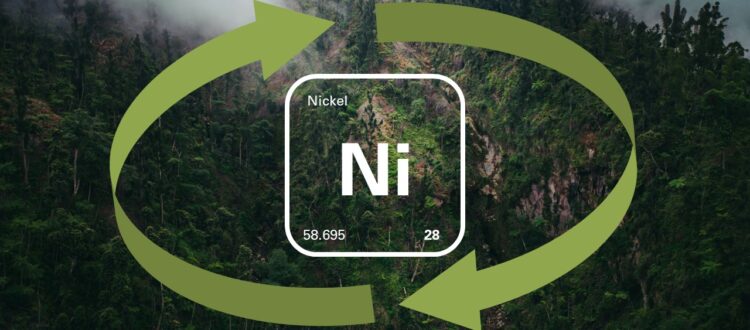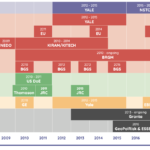Unveiling the hidden costs: rethinking nickel reliance amid decarbonization efforts
by Nicole Horner and Alessandra Hool
Nickel plays an important role in decarbonizing the global economy. It is needed for energy storage technologies due to its ability to maximize storage capacity, and the quantities of nickel used in the cathodes of lithium-ion batteries for electric vehicles are increasing. Nickel is also used for alloys needed in solar panels and wind turbines and as catalysts for green hydrogen production. Thus, the International Energy Agency (IEA) estimates an increased demand for nickel of around 65 percent by the end of the decade.
However, the demand for electric vehicles is currently growing slower than projected, which has led to an oversupply of nickel and decreasing prices since late 2022. While nickel production in Indonesia is booming, other countries are struggling to keep mines open having to keep pace with more competitively priced coal-fueled nickel production from Indonesian nickel suppliers. As a consequence, even though more nickel will be needed in the future, mines are closing. This will leave Indonesia with an even larger market share than it currently has.
Indonesian nickel is mainly found in low concentration deposits underneath the rainforest floor. It is extracted by crushing the mined ore and converting it into a slurry that is treated with acid under high pressure. Much of Indonesia’s nickel is produced with coal-powered energy, which translates to higher carbon emissions per ton compared to other production methods. High levels of deforestation caused by nickel production in Indonesia are another worry of the World Wildlife Fund (WWF), with Indonesia having the highest forest loss in mining areas worldwide. Further concerns center around water pollution and the endangerment of local wildlife.
Miners outside Indonesia are calling for the London Metal Exchange (LME) to introduce a “green premium” for more sustainably sourced nickel. The LME however believes that there are currently not enough potential buyers of more sustainably sourced nickel to support the introduction of such a premium. Additionally, the question remains: what criteria must be met for nickel to be classified as “green”? The main challenge is establishing standardized methods for measuring emissions uniformly across the industry.
Mining practices resulting in a lower carbon footprint, such as using renewable energy sources, could qualify as criteria for “green” nickel. Minimizing habitat destruction or implementing reforestation practices might be other ideas to take into consideration. Additionally, the reduction of water waste and pollution by recycling and treating water used in operations might be contemplated as criteria, along with higher transparency and respect for labour rights. Emerging technologies such as high-pressure acid leaching or bioleaching also promise a more sustainable alternative for nickel production. In the long term, recycling of lithium-ion batteries will add to a lower-footprint alternative – however, it will take time until nickel recycled from EV batteries will substantially add to meet the expected demand.
Looking into the future, shutting down nickel operations which produce nickel with a lower environmental footprint will deprive buyers of the possibility to access more sustainably sourced nickel amidst a globally increasing demand. In addition, the import dependence on one single country – Indonesia – could further increase, putting supply chains at disruption risks.
What mechanisms could be implemented to incentivize the continuation, or even expansion, of more sustainable nickel mining operations? Besides the possibility of regulating environmental footprints in products, OEMs and other companies using nickel might be more likely to pay a premium for more sustainably sourced nickel if there is an economic benefit in it, such as receiving government benefits or being able to sell a “greener” labelled electric vehicle. Since the LME and Metalshub collaborated in 2021 to define “low carbon” nickel, described as emitting under 20 tonnes of carbon per tonne of nickel, it is already possible to trade such nickel on Metalshub’s system. While the LME does not currently have intentions to introduce a contract specifically for “green” nickel, Metalshub has now proposed the publication of a low carbon index price. This index has the potential to evolve over time into a “green” nickel premium index.
Developing thought-out government policies and building up a well-defined labelling system around environmental criteria such as these gives buyers the options to improve their ESG credentials and paves the path to a more sustainable future for nickel founded on intentional collaborative efforts.
Sources
- Nickel faces existential moment with half of mines unprofitable. Mining.com. February 2024. https://www.mining.com/web/nickel-faces-existential-moment-with-half-of-mines-unprofitable/
- Global miners call on LME to introduce green premium for nickel. Financial Times. March 2024. https://www.ft.com/content/892bb299-29bd-4e73-b929-9c835690f9f8
- Nickel – a mineral with a challenging role in clean tech. IEF. January 2024. https://www.ief.org/news/nickel-a-mineral-with-a-challenging-role-in-clean-tech
- Australia’s ‘white gold’ was supposed to fuel the EV transition – then prices for battery minerals collapsed. The Guardian. January 2024. https://www.theguardian.com/environment/2024/jan/20/australia-white-gold-ev-transition-battery-minerals-lithium-nickel-cobalt
- EVs won over early adopters, but mainstream buyers aren’t along for the ride yet. npr. February 2024. https://www.npr.org/2024/02/07/1227707306/ev-electric-vehicles-sales-2024
- Pro Take: Can Nickel, Cobalt and Other Battery Metals Be Sourced Sustainably? The Wall Street Journal. May 2023. https://www.wsj.com/articles/pro-take-can-nickel-cobalt-and-other-battery-metals-be-sourced-sustainably-ccfbe9ec
- Nickel and sustainability: Towards a circular economy. Nickel Magazine. 2018. https://nickelinstitute.org/media/2698/nickelvol33no2summer2018_fb_eng.pdf
- LME partner Metalshub plans for ‘green’ nickel price. Mining.com. March 2024. https://www.mining.com/web/lme-partner-metalshub-plans-for-green-nickel-price/




